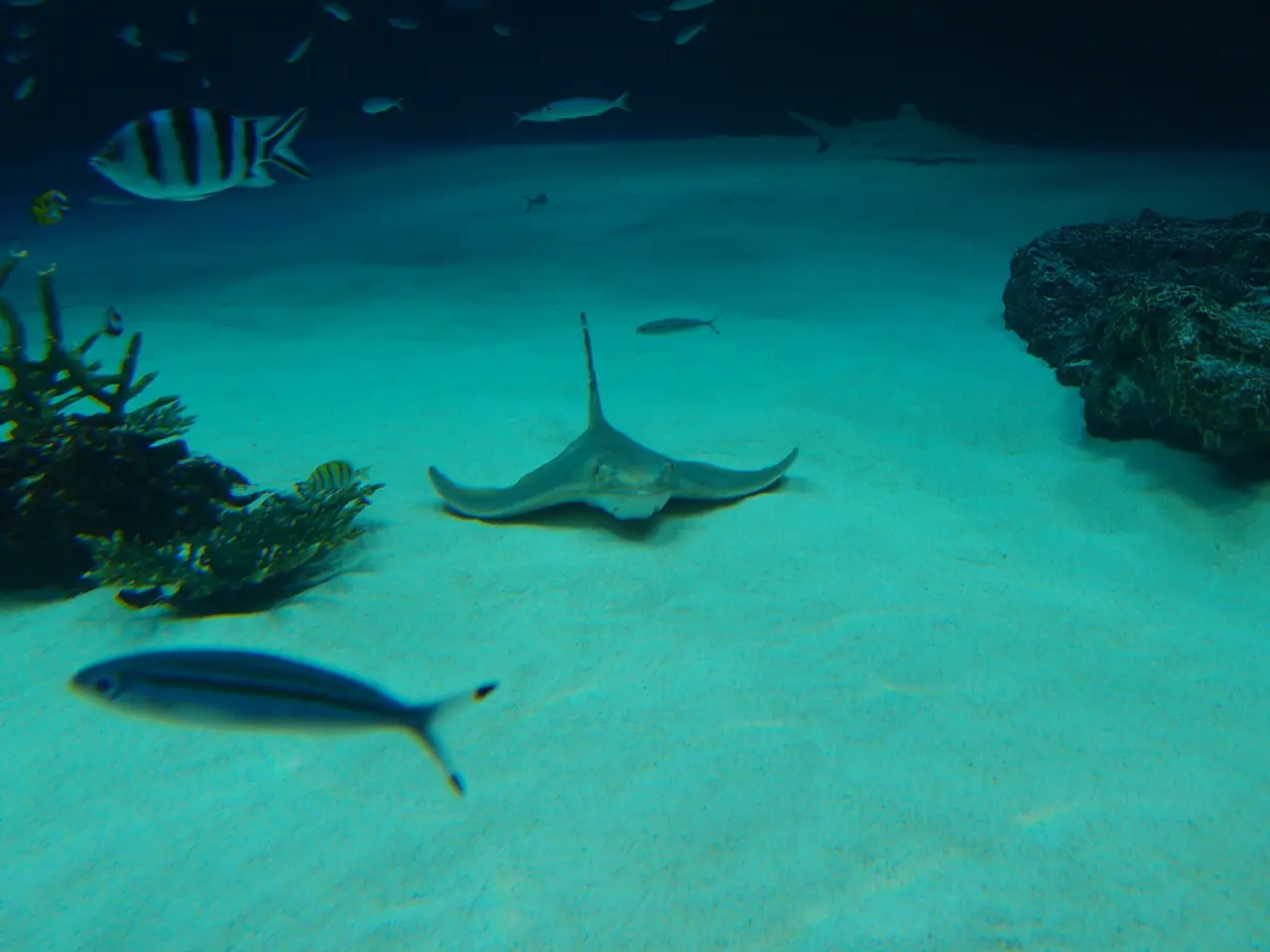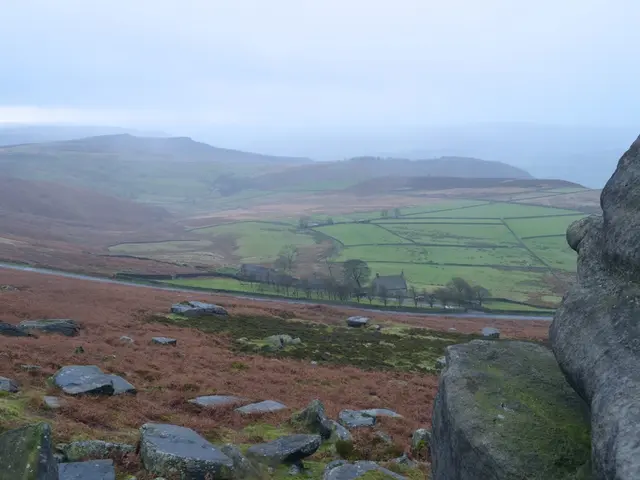Enhancing your Skills in Underwater Picture-Taking
In the vast and mysterious world beneath the waves, capturing the beauty of the ocean through photography can be a rewarding and challenging endeavour. Here are some key tips to help you improve your underwater photography skills, focusing on technical aspects, equipment selection, and creative techniques.
Firstly, mastering technical skills is essential. Get close to your subject, ideally within 12–18 inches, to reduce water distortion, colour loss, and backscatter - particles that cause spots in images. Shooting upward and framing your subject against a light source such as the water surface can add depth and separation.
Understanding light and composition is crucial. Use manual white balance and shoot in RAW format to allow better colour correction and exposure adjustments during editing. For night dives, use a wide aperture, lower shutter speed, and gradually increase ISO for correct exposure in low light, keeping buoyancy steady to avoid stirring sediment. Position strobes or flash units at about 45-degree angles to your subject to illuminate properly with minimal backscatter; use diffusers and adjust power as needed.
Applying traditional composition principles, such as the rule of thirds, leading lines, and negative space, while accounting for underwater challenges like currents, 3D space, and subject movement, can greatly enhance your images.
When it comes to equipment, wide-angle lenses are ideal for large scenes, while macro lenses are perfect for capturing small subjects and details effectively.
Mastering buoyancy and moving slowly is essential for avoiding disturbing the environment and stirring particles, which degrade image clarity.
For those seeking further learning resources and inspiration, instructional guides like Scuba Monster’s comprehensive underwater photography techniques are a great starting point. Podcasts and interviews with professionals like Kate Jonker, covering gear setups, lighting, and creative compositional storytelling, can offer valuable insights. Articles on specialized scenarios, such as low-visibility and night dive photography, from ProShotCase and Bluewater Photo Store blogs, are also worth exploring.
Experimenting with creative techniques can elevate your underwater photography from technical competence to artistic expression. Try capturing natural light beams or “god rays” in shallow waters combined with strobes for dramatic effect, using burst mode to capture fleeting moments in environments with moving subjects or fluctuating visibility, and playing with shadows, silhouettes, and ambient light contrast during night dives to add atmosphere.
Exploring post-processing in Lightroom or Photoshop for colour recovery and enhancing image depth and clarity can further refine your images.
With these tips, techniques, and resources, you'll be well on your way to capturing stunning underwater images that showcase the beauty of our oceans. Happy diving and shooting!
- To reduce water distortion, color loss, and backscatter, try getting close to your subject, ideally within 12–18 inches.
- Understanding light and composition is crucial; use manual white balance and shoot in RAW format for better color correction and exposure adjustments.
- For night dives, use a wide aperture, lower shutter speed, and gradually increase ISO for correct exposure in low light, while maintaining steady buoyancy to avoid stirring sediment.
- Wide-angle lenses are ideal for large scenes, while macro lenses are perfect for capturing small subjects and details.
- Mastering buoyancy and moving slowly is essential for avoiding disturbing the environment and stirring particles, thereby preserving image clarity.
- Instructional guides like Scuba Monster’s comprehensive underwater photography techniques can serve as a great starting point for further learning.
- Articles on specialized scenarios such as low-visibility and night dive photography from ProShotCase and Bluewater Photo Store blogs offer valuable insights.
- Experimenting with creative techniques like capturing natural light beams or shadows, silhouettes, and ambient light contrast can elevate your underwater photography.
- Post-processing in Lightroom or Photoshop can further refine your images, enhancing color recovery, depth, and clarity in your underwater lifestyle photography.




